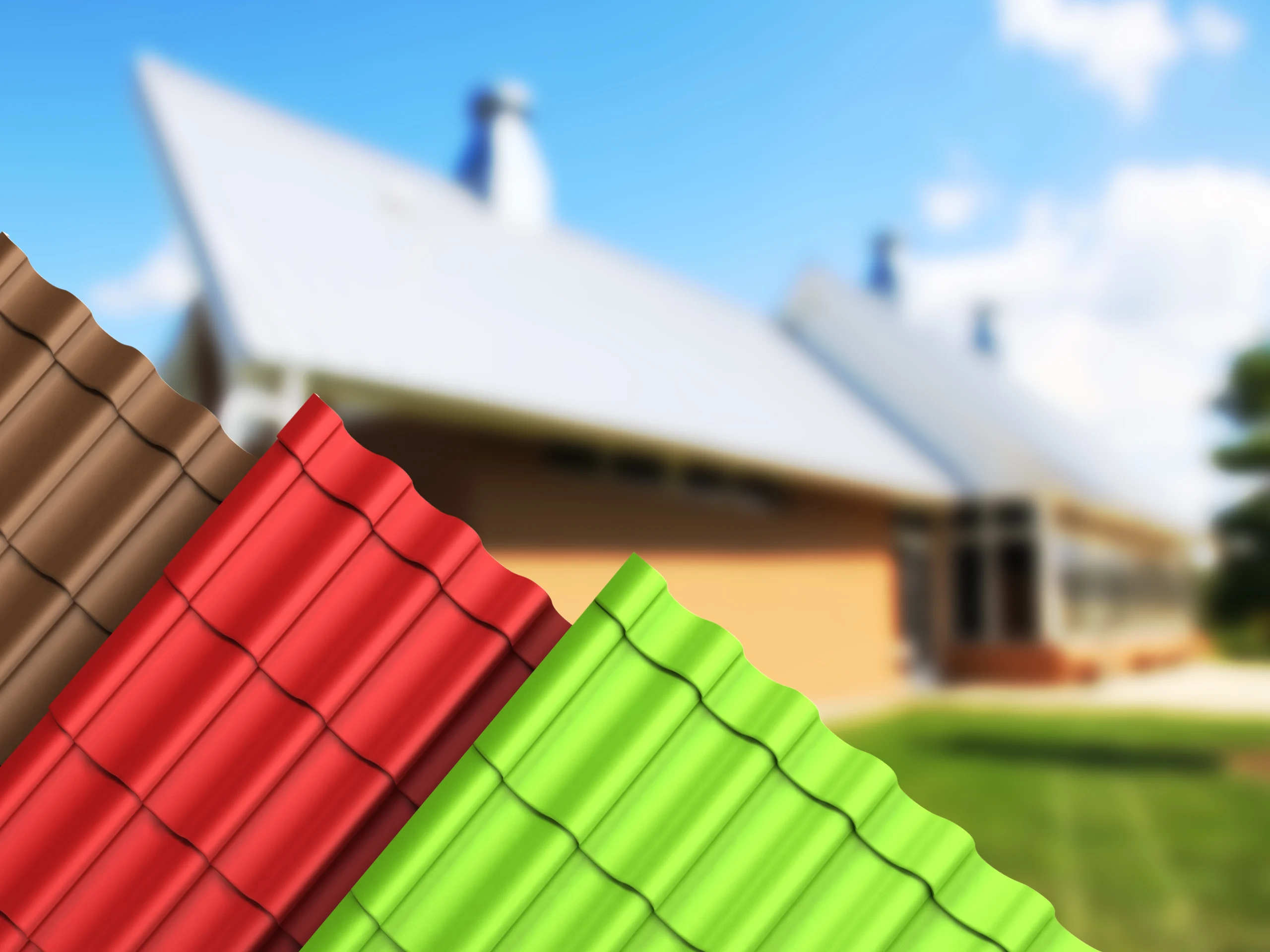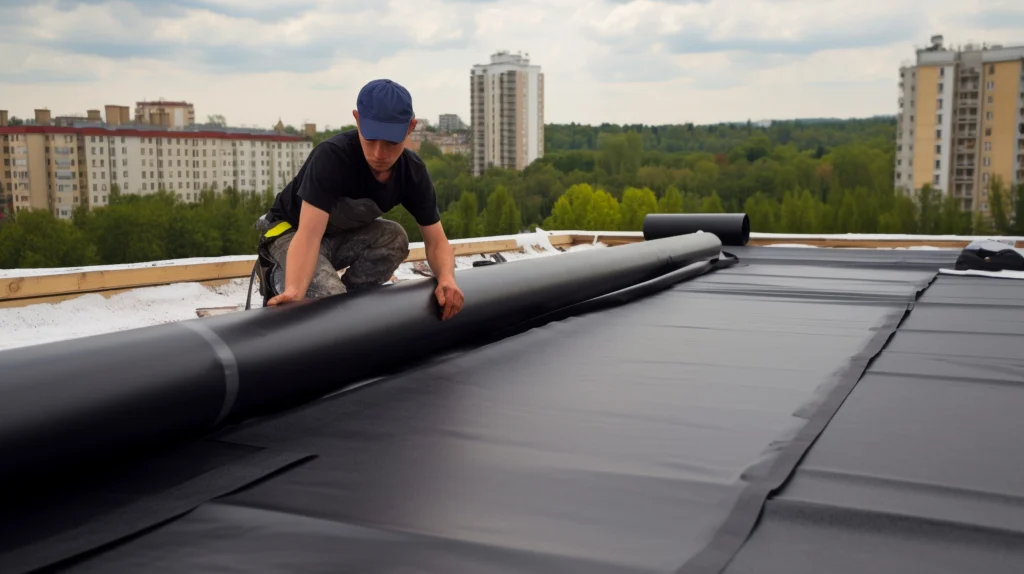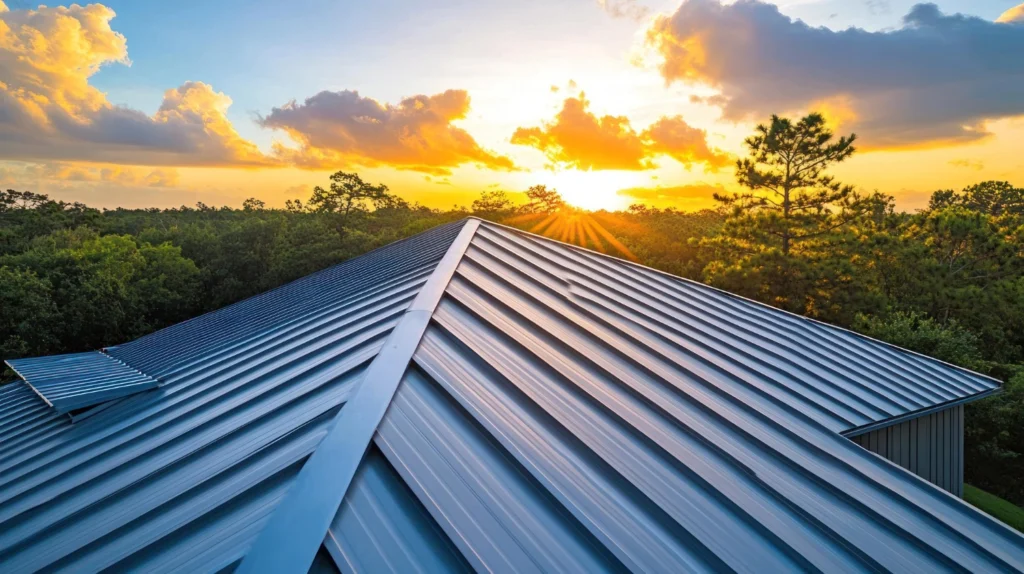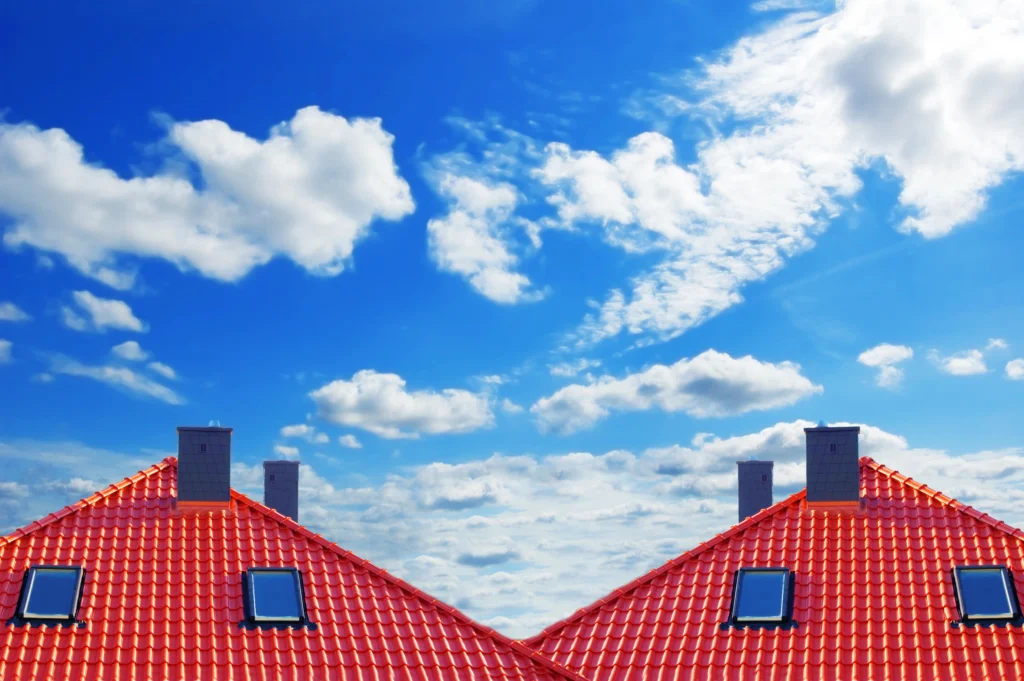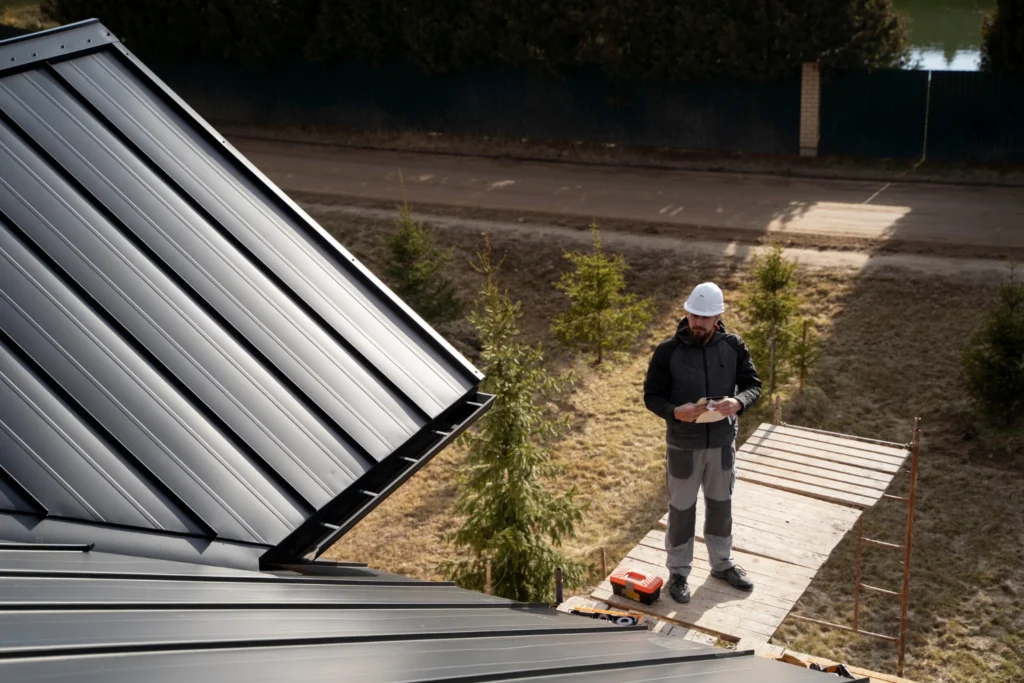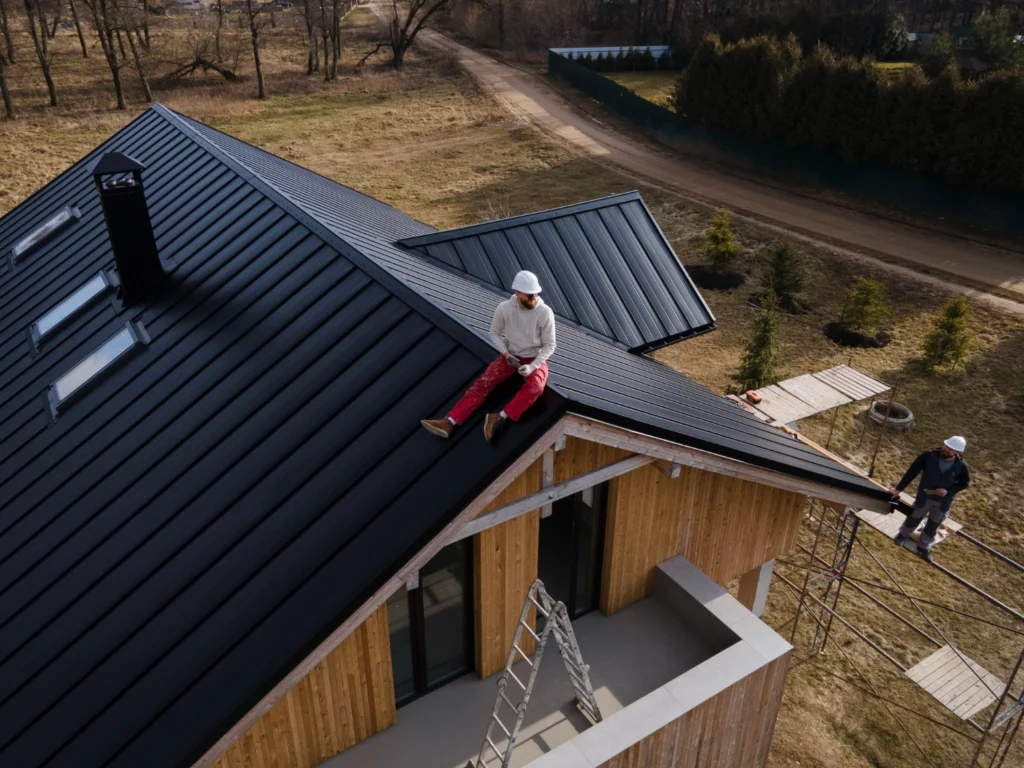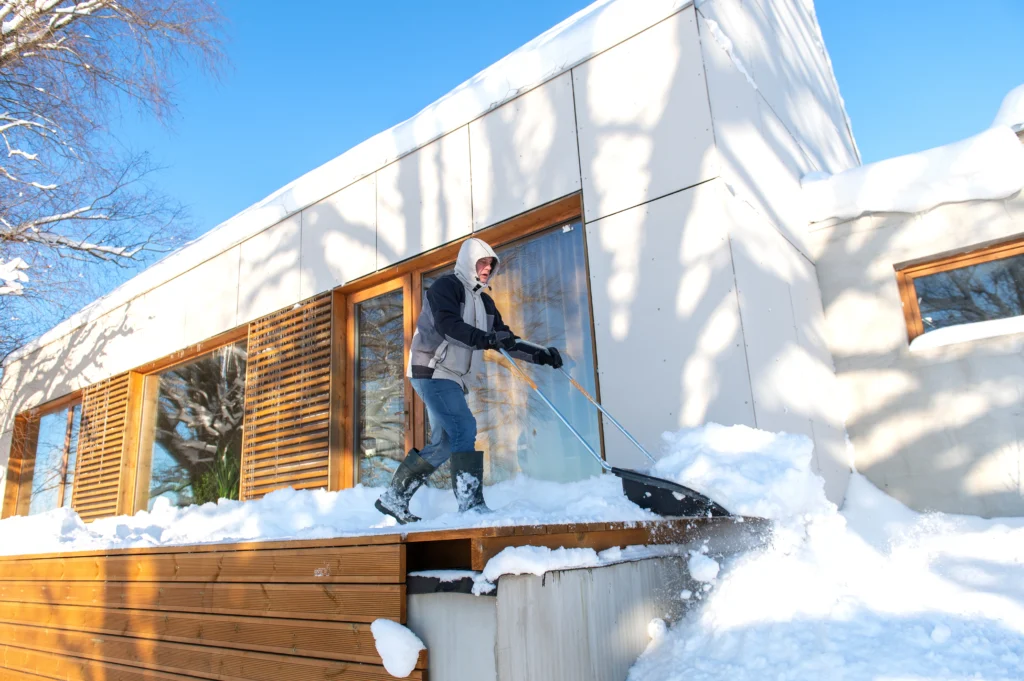What Roofing Material Is Best for a Flat Roof?
When selecting the right flat roof material, your choice will determine both the longevity and performance of your roofing system. Unlike traditional pitched roofs, flat roofs require specialized materials that can handle water pooling, temperature fluctuations, and unique structural demands. Understanding your options will help you make an informed decision that protects your investment for decades to come.
What Is a Flat Roof?
A flat roof is a horizontal or nearly horizontal roof surface with minimal slope, typically ranging from 0 to 10 degrees. While called “flat,” these roofs feature a slight incline to promote water drainage and prevent pooling.
Flat Roofs for Residential and Commercial Buildings
Both residential and commercial properties benefit from flat roof systems, though commercial buildings more commonly feature this design. Modern architectural trends have increased flat roof popularity in residential construction, particularly for contemporary homes and additions.
Flat Roof Benefits
Flat roofs offer several advantages over traditional pitched roofs:
- Cost-effective installation: Requires fewer materials and less labor than sloped roofs
- Easy maintenance access: Simple to inspect and repair
- Energy efficiency: Excellent platform for solar panels and HVAC equipment
- Additional space: Can accommodate rooftop gardens or recreational areas
Flat Roof Space Is Usable Space
The horizontal surface of a flat roof creates valuable usable space. Property owners can install rooftop gardens, outdoor entertainment areas, or mechanical equipment without the constraints of a sloped surface.
Why Are Flat Roofs Less Common for Houses?
Traditional residential construction in colder climates like Minnesota and Wisconsin has favored pitched roofs for snow load management and water drainage. However, modern flat roof systems have overcome many historical limitations through improved materials and installation techniques.
Why Does Choosing the Right Flat Roof Material Matter?
Your flat roof material choice directly impacts your property’s protection, energy efficiency, and maintenance costs. The wrong material can lead to premature failure, costly repairs, and interior damage.
Evaluate Key Factors When Choosing Flat Roofing
Consider these essential factors:
- Climate compatibility: Materials must withstand local weather conditions
- Building structure: Roof deck must support the material weight
- Budget constraints: Initial cost versus long-term value
- Maintenance requirements: Some materials need more frequent attention
- Energy efficiency goals: Reflective materials can reduce cooling costs
Flat Roof Materials Require Experienced Roofers
Professional installation is crucial for flat roof success. Improper installation can void warranties and create expensive problems. Work with experienced roofing contractors who understand flat roof systems and local building codes.
Assess the Best Flat Roof Systems for Different Climates
Minnesota and Wisconsin’s harsh winters require materials that can handle freeze-thaw cycles, heavy snow loads, and temperature extremes. Choose materials specifically rated for cold climates.
6 Types of Flat Roof Materials
1. EPDM Membrane Roofing
EPDM (Ethylene Propylene Diene Monomer) rubber roofing is a popular single-membrane system. This synthetic rubber material offers excellent weather resistance and flexibility.
Benefits:
- Affordable installation costs
- Excellent cold-weather performance
- Easy repair process
- Long lifespan (15-25 years)
Considerations:
- Vulnerable to punctures
- Requires professional installation
- Limited color options
2. TPO Membrane Roofing
TPO (Thermoplastic Polyolefin) combines the benefits of EPDM and PVC roofing systems. This white membrane reflects heat and provides excellent energy efficiency.
Benefits:
- Superior energy efficiency
- Environmentally friendly
- Chemical and puncture resistant
- Competitive pricing
Considerations:
- Newer technology with a shorter track record
- Quality varies between manufacturers
- Requires skilled installation
3. PVC Membrane Roofing
PVC roofing offers premium performance with excellent durability and chemical resistance. This membrane system works well for buildings with HVAC equipment or grease exposure.
Benefits:
- Outstanding chemical resistance
- Fire-resistant properties
- Long lifespan (20-30 years)
- Energy-efficient white surface
Considerations:
- Higher upfront costs
- Can become brittle in extreme cold
- Requires specialized installation
4. Standing Seam Metal Roof
Metal roofing for flat applications uses standing seam panels with minimal slope. This system provides exceptional durability and weather resistance.
Benefits:
- Extremely long lifespan (40-70 years)
- Excellent snow shedding
- Low maintenance requirements
- Recyclable material
Considerations:
- Higher initial investment
- Potential for thermal expansion issues
- Requires skilled metal roof installation
5. Modified Bitumen Roofing
Modified bitumen combines traditional built-up roofing with modern polymer technology. This system offers good performance at moderate costs.
Benefits:
- Proven track record
- Good puncture resistance
- Moderate cost
- Various installation methods
Considerations:
- Limited color options
- Requires torch application (fire risk)
- Shorter lifespan than premium options
6. Built-Up Roofing Systems
Built-up roofing (BUR) uses multiple layers of roofing felt and hot asphalt. This traditional system provides reliable protection through redundant layers.
Benefits:
- Time-tested performance
- Good puncture resistance
- Affordable option
- Suitable for high-traffic areas
Considerations:
- Installation odors
- Heavy weight
- Limited energy efficiency
- Maintenance-intensive
Investigate Popular Flat Roof Materials for Your Home
Metal Roofing for Flat Roofs
Metal roofing excels in harsh climates like Minnesota and Wisconsin. Standing seam metal systems handle snow loads effectively while providing decades of reliable service. The initial investment pays dividends through reduced maintenance and exceptional longevity.
Can You Have a Flat Roof with Shingles?
Traditional asphalt shingles aren’t suitable for flat roof applications. Shingles require a minimum slope for proper water drainage. For flat roofs, membrane systems or metal roofing provide appropriate water protection.
Compare Flat Roof Installation Costs and Lifespan
Cost Analysis of Flat Roof Materials
Material costs vary significantly based on quality and installation complexity:
- EPDM: $3-7 per square foot
- TPO: $4-8 per square foot
- PVC: $5-10 per square foot
- Metal: $8-15 per square foot
- Modified Bitumen: $3-6 per square foot
- Built-up Roofing: $3-8 per square foot
How Much Will Your New Flat Roof Cost?
Total project costs include materials, labor, tear-off, and disposal. A typical residential flat roof replacement ranges from $5,000 to $15,000, depending on size and material choice. Commercial projects scale proportionally based on square footage.
Proper Maintenance for Flat Roofs
How to Make a Flat Roof Last
Regular maintenance extends the flat roof’s lifespan significantly:
- Bi-annual inspections: Check for damage, ponding water, and membrane integrity
- Immediate repairs: Address small issues before they become major problems
- Drainage maintenance: Keep drains and gutters clear
- Professional service: Schedule annual professional inspections
Review Maintenance Practices for Flat Roof Longevity
Preventive maintenance costs far less than emergency repairs. Document all maintenance activities and address issues promptly to maximize your roof system investment.
Flat Roof Drain Types and Structural Considerations
Parts of a Flat Roof
Understanding flat roof components helps you make informed decisions:
- Roof deck: Structural foundation
- Insulation: Energy efficiency layer
- Vapor barrier: Moisture protection
- Membrane: Waterproof surface
- Drainage system: Water removal
Flat Roof Drain Types
Proper drainage prevents water damage and extends roof life:
- Interior drains: Built into the roof structure
- Scuppers: Openings through parapet walls
- Gutters: Perimeter water collection
Flat Roof Designs for Houses
Residential flat roofs require careful design for local building codes and climate conditions. Professional design ensures proper slope, drainage, and structural support.
The Best Flat Roof Material – Final Considerations
Which Flat Roof Material Is Right for You?
The best flat roof material depends on your specific needs:
- Budget-conscious: EPDM or built-up roofing
- Energy efficiency: TPO or PVC
- Longevity: Metal or PVC
- Low maintenance: Metal or TPO
Explore the Advantages of Different Flat Roof Options Today
Each material offers unique benefits. Consider your priorities: initial cost, energy efficiency, longevity, or maintenance requirements. Professional consultation helps match materials to your specific situation.
How to Choose the Best Flat Roof Material for Your Home
The Tips You Need to Find a Great Roofing Contractor for Your Flat Roof Replacement
Select a roofing contractor with flat roof experience and local knowledge. Verify licensing, insurance, and references. Request detailed written estimates and material specifications.
Quality flat roof installation requires expertise in membrane systems, drainage design, and local building codes. Choose contractors who understand Minnesota and Wisconsin’s challenging climate conditions.
Your flat roof investment deserves professional installation and quality materials. The right choice provides decades of reliable protection while enhancing your property’s value and efficiency.
Schedule Your Roofing Assessment Now to discuss your flat roof options with experienced professionals who understand your local climate and building requirements.

